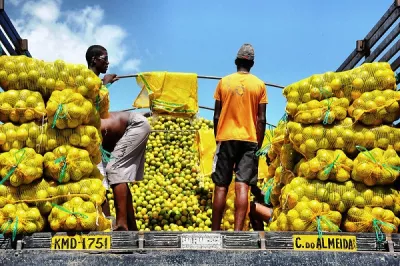What Is Che Guevara Doing in this Bank?
We often think of branchless banking without looking at the nonprofits working in the community for social and economic development. Two colleagues and I were in Brazil in December to understand the business case for agents (termed “banking correspondents” in Brazil) and good practice for building a viable agent network. We partnered with the Center for Microfinance Studies at FGV (Fundação Getulio Vargas) and PlaNet Finance Brazil. In previous posts, Sarah Rotman took a detailed look at how two agents – Nestor and Roberto – see the business, and Claudia McKay talked about agents’ big impact on a small town in the Amazon, previously 12 hours by boat from the nearest bank.
In this post, we look at Instituto Palmas, a nonprofit working in Brazil’s northeast, the poorest region of the country. Joaquim is the charismatic former priest who runs Instituto Palmas. When you meet him, two things immediately distinguish Joaquim from other NGO managers.
First, the 6 foot high portrait of Che Guevara in the lobby, peering down on the tellers. At least for me, it’s a first to see in a bank.
Second, Joaquim sees financial development at the center of his work. Instituto Palmas has created its own currency, to encourage more money to circulate inside the community (Che would probably approve). Palmas has also formed 36 community banks, each with flourishing microloan programs and agents for Banco do Brasil, which Joaquim sees as a critical link between the poor communities Palmas works in and the wider economy. Having agents in the middle of a slum means residents save hours of time and (for them) considerable cost in traveling to the city center.
The agent in Palmas’ headquarters branch actually has 3 teller booths, all of which were active during our visit. On an average day, Palmas processes 458 transactions per day at this location and nearly 2000 in other agent locations. Clearly, some community banks are more active as agents, indexed to size of the surrounding neighborhood. In some locales, the Palmas community bank serves an entire urban slum; in others, a small rural town of sugar cane choppers. Arguably, having an agent is even more important in the latter, as there often will be no bank branch at all aside from Palmas.
However, at lower transaction volumes, Palmas is most likely supporting the expense of running the agent with cross-subsidies from other income streams. Given Joaquim’s primarily social mission, he does not mind. It does beg the question whether this is the only way in which agents could be maintained in some of the very small and very poor communities in which Palmas works. A more commercial approach would probably dispense with the stand alone agent booths and the staff who are dedicated to them, and fold the activity of handling transactions into the job of another Palmas employee who has excess time.
We have seen Banco Postal – the tie up between the country’s largest private bank, Bradesco, and the post office – able to operate in small, rural towns as well. Bradesco extols the benefits that have accrued to them. That said, Palmas is often operating in communities without easy access even to the post office, so perhaps Palmas is really the one out on the farthest edge of branchless banking in Brazil.
-Mark Pickens




Add new comment